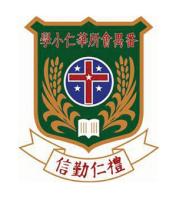
PUN U ASSOCIATION WAH YAN PRIMARY SCHOOL
2 PAK FUK ROAD NORTH POINT HONG KONG
Based on Jesuit educational principles and the school motto, the School aims at cultivating the following among students under a happy campus atmosphere: multiple intelligences (linguistics, Math, scientific, technological, humanistic, aesthetic, physical, logic, self-management, reflection and imagination), respect (for self, others and Nature), empathy and compassion, self-confidence and courage to take risks, sense of responsibility, diligence towards personal excellence, mutual trust with others, religious and moral values, and a commitment to serve and accompany the needy.
Primary School Profile
School Information
| Supervisor / Chairman of Management Committee | Fr. Lo Pak Huen William |
| School Head | Mr. Chow Ping To James |
| Finance Type | Aided |
| Session | Whole Day |
| Student Gender | Boys |
| Medium of Instruction | Chinese |
| Sponsoring Body | The Pun U District Association of H.K. |
| Religion | Catholicism |
| Year of Commencement of Operation | 1971 |
| School Motto | Courtesy, Benevolence, Magis, Integrity |
| Area Occupied by the School | About 4,720 Sq. M |
Through-train / Feeder / Nominated
| Feeder | WAH YAN COLLEGE, HONG KONG |
Annual School Charges
| School Fees | - |
| Activity Fees | - |
| PTA Fees | "$100" |
| Approved Charges for non-standard items | "A/C fee not subsidized by EDB, publications such as handbook, smart card, etc (Around $200)" |
| Other Charges | - |
Teaching Staff Information
| Number of teaching posts in the approved establishment | 48 |
| Total number of teachers in the school | 50 |
| Qualifications and professional training (%) | |
| Teacher Certificate / Diploma in Education | 100% |
| Bachelor Degree | 100% |
| Master/ Doctorate Degree or above | 30% |
| Special Education Training | 40% |
| Years of Experience (%) | |
| 0 - 4 years | 12% |
| 5 - 9 years | 22% |
| 10 years or above | 66% |
Class Structure
| P1 Number of classes | 4 |
| P2 Number of classes | 4 |
| P3 Number of classes | 4 |
| P4 Number of classes | 4 |
| P5 Number of classes | 4 |
| P6 Number of classes | 4 |
| Total | 24 |
School Facilities
| Number of Classroom(s) | 24 |
| Number of School Hall(s) | 1 |
| Number of Playground(s) | 2 |
| Number of Library(ies) | 1 |
| Special Rooms | Student Activity Centre, School History Room, Guidance Activity Room, Small Group Teaching Rooms (x4), VR/AR Room, Subject special rooms: Chinese Language (Hua Xuan), English Language, General Studies, Visual Arts, Music, Computer. |
| Facility(ies) for Supporting Students with Special Educational Needs | Ramp, Accessible lift, Accessible toilet, Braille and tactile floor plan, Tactile guide path and Visual fire alarm system. |
| Others | Chapel,CampusTV Studio,Flight-simulation Cabin, PTA&AA Rm,Our Lady statue, Wah Yan's Got Talent,Conference Rm,2 Interview Rms,2 Dressing Rms,Tuck shop |
Mode Of Teaching
| Mode of teaching at different levels | P.2-P.6 levels adopt the large class mode, i.e. with a class size of 30 students (will switch to 25 students per class starting from P.1 2023). In P.4-P.6, students are seated in pairs to strengthen collaboration learning skills. |
| Class Remarks | According to students' learner diversity, individual main subject (Chi., Eng. or Math.) at certain grades has common timetables across the classes for small class teaching, converting the original 4 classes into 5-6 teaching classes, thus increasing learning effectiveness. Arrangements are reviewed once every term. |
| Number of test(s) per year | 1 |
| Number of exam(s) per year | 2 |
| Diversified Assessment for Learning | The design of our formative and summative assessment is based on the school-based learning objectives of each subject and the Multiple Intelligence Theory. Chinese: Learning Portfolio; English: Debating; Mathematics: Exploratory Task and Performance Task; General Studies: Project Learning, Scientific Investigations; Physical Education: Physical Fitness Test; Music: Singing and Practical Musical Instruments Assessment |
| Streaming arrangement | All classes are of mixed-abilities (no 'elite classes'), with teaching and assessment based on differentiated learning objectives to cater for learner diversity. (No tests or examinations in P.1 and in Term 1 of P.2) |